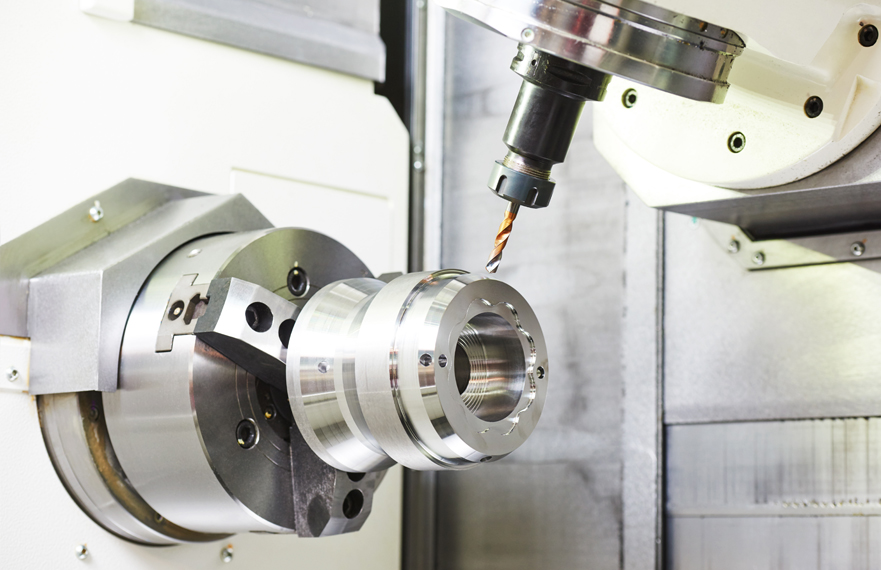15 years one-stop China custom CNC machining parts factory

Hey there I’m VMT Sam!
With 25 years of CNC machining experience we are committed to helping clients overcome 10000 complex part-processing challenges all to contribute to a better life through intelligent manufacturing. Contact us now
 230 |
Published by VMT at Oct 19 2021
230 |
Published by VMT at Oct 19 2021
Non-standard parts machining We know that precision CNC machining can be divided into standard parts machining and non-standard parts machining according to the processing objects. Relatively speaking, the machining of standard parts is relatively easy, while the machining of non-standard parts is relatively difficult. Many newcomers who have just entered this industry cannot distinguish between standard parts and non-standard parts.
Next, we will explain the difference between non-standard parts and standard parts. Special attention should be paid in the process of non-standard precision CNC machining parts and techniques to improve the processing efficiency of non-standard automatic lathe parts.
Standard and non-standard parts
Standard precision CNC machining parts
First of all, we know that non-standard precision CNC machining parts are proposed relative to standard parts, so before we understand non-standard parts, we need to know what is called standard parts? Standard parts refer to the commonly used parts, such as threaded parts, rolling bearings, etc., which have been fully standardized in structure, size, drawing method, marking and other aspects and produced by professional manufacturers.
The broad sense includes standardized fasteners, connectors, transmission parts, seals, hydraulic components, pneumatic components, bearings, springs and other mechanical parts. The narrow sense includes only standardized fasteners. The domestically known standard parts are the abbreviations for standard fasteners. , Is a narrow concept, but the existence of a broad concept cannot be ruled out.
In addition, there are industry standard parts, such as automobile standard parts, mold standard parts, etc., which are also standard parts. The narrowly defined standard parts are standard fasteners, which are actually a kind of connecting parts. However, due to their wide variety and wide application range, they are regarded as a single type in actual use, or even referred to as standard parts for short. For example: screws, washers, rivets, welding nails and other precision CNC machined parts.

Non-standard precision CNC machining parts
Non-standard precision CNC machined parts have strict specifications, no relevant parameter rules, and other accessories that are freely controlled by the enterprise. There are many types of non-standard parts, and there is currently no standard classification. The general classification is as follows:
Metal non-standard parts
Customers provide drawings of precision CNC machining parts. Manufacturers use CNC machining machinery and equipment to produce corresponding products according to the drawings. Usually molds are mostly used. Tolerance requirements and finishes are specified by customers. Products from casting to finishing require corresponding quality control. The process is complicated and highly variable, and the cost is generally higher than that of standard parts.
Non-metal parts
It is the processing of some non-metallic materials. Such as plastics, wood, stone, etc. In recent years, the injection molding industry and the development of plastic molds have become more and more sophisticated. The surface design and the citation of programming and numerical control have greatly improved the cost and tolerance level of non-standard processing.
Are there any non-standard precision CNC machining parts that need special attention?
Some precision CNC machined parts on the market are individually produced by engineers, who draw drawings according to actual needs, and then find manufacturers of precision machined parts for custom processing. We call this kind of parts non-standard parts. The core components of many electronic products are non-standard parts. They are different from standard products. They all have a fixed process. Therefore, the processing must be redesigned every time. In the CNC machining process, what are the non-standard precision CNC machining parts? What needs special attention?
The first point is to check whether the material specifications meet the customer's drawing requirements. Some process feet that need grinder processing, such as tapping, quenching, grinder, wire cutting, electric spark, internal and external circular grinding, slow wire walking, surface treatment, etc., should be excluded. Each step of precision CNC machining must meet the requirements of the process. After the quality inspection is confirmed, the next process can be entered. If the inspection fails, it should be returned for modification in time to ensure efficiency while ensuring the quality of precision CNC machined parts.
The second point is that in non-standard precision CNC machining parts, the parts are usually composed of multiple curved surfaces, and the processing of each curved surface generally needs to be carried out in stages. When we arrange the processing sequence of precision mechanical parts, we should first roughen each surface, and arrange semi-finishing according to the required order, and then arrange the finishing. For precision CNC machined parts with high precision requirements, in order to reduce the influence of rough machining deformation on finishing, we should not continue roughing and finishing, but should be carried out in stages and at appropriate intervals.
Summarize
Standard parts are easier than non-standard precision CNC machining parts, because the structure, size, drawing method, marking and other aspects have been completely standardized. Since non-standard customized precision CNC machining parts need to face different situations and customer needs, they are carried out in stages and at appropriate intervals.
Ready To Start Your Next Project?
Get Instant Quote

Request a Free Quote
Send us a message if you have any questions or request a quote. We will get back to you ASAP!